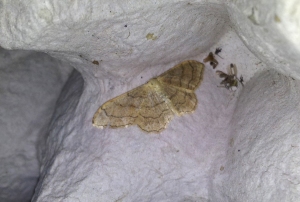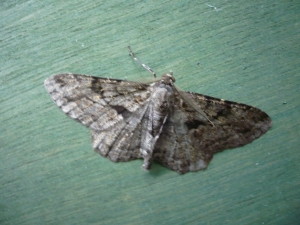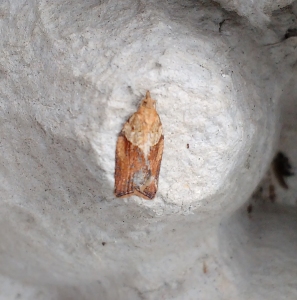First blog for a bit. Been pretty busy in a pretty inhospitable part of the country (more on that hopefully soon..).
As it is New Year’s Eve as I write this I thought I’d share some wildlife highlights and statistics. Pretty dry I suppose but I kinda like it!
OK, so you remember at the start of the year I decided to get more into moths than I had in previous years? Well I did, I had my garden moth trap out pretty much once or twice (or more) a week from January all the way through to September when work took me travelling. I also bought the MapMate software (which is an impressive database which can be linked to other databases thus creating a huge one!) This has allowed me to share my moth records with the county moth recorder and I can see all the other millions of moth records for Cheshire. Anyway, using this software I’ve been able to see what the most common moths in my garden are this year. So here’s my top 10 (Which I’ve ranked by record not by individuals – some moths are more gregarious than others in the trap).
1. Large Yellow Underwing (pictured above)
2.Heart and Dart (No photo)

4. Dark Arches (No photo)


6. Light Brown Apple Moth (pictured above)
7. Bee Moth (No photo)
8. Lesser Yellow Underwing (no photo)


10. Common Marbled Carpet (pictured above)
All photos by me the author.
On to my favourite moths for the year – just a few a ‘top’ 5 but not in any order (and with no photos – WordPress is making it really difficult for me to lay out photos neatly and/or vaguely professionally + I don’t have any)
- Chimney Sweeper.This is a black moth (hence the name) which looks a lot like a butterfly and also flies during the day like a butterfly. One turned up in my trap; which is remarkable as they shouldn’t turn up in moth traps due to their daytime habits (and therefore not attracted to light).
- Wood Tiger Moth. A brightly coloured yellow black and white moth which also flies during the day. I found one in Crowden, where I was coming back from Ring Ouzel surveying. I found out via MapMate that this moth hasn’t been recorded there before now.
- Black Rustic. One of those creatures when you flick through field guides that really stands out and that you wish you can see in the real world. It’s velvety jet black in colour and is just gorgeous and one turned up on the trap this September.
- Oak Eggar. Another day flying moth. This one reminds me of working in the uplands on my Ring Ouzel surveys. These moths were everywhere this summer but my stand out memory was of one in a Ring Ouzel’s beak as it was about to turn into fledgling food.
- Streamer. By far and away the best looking moth that I found in the garden this year, this was newly emerged and was white pink and lilac in colour.

I’ll leave my bird highlights until tomorrow, don’t want to give an information overload here.
But the relevance to the blog title (I’m trying to keep a vague theme here!) is that all these moth records have been submitted to my local county recorder and can be potentially used (along with all the others) as a resource in the future. So if anyone is reading this and has a load of moth records (or any other records) please submit them to your local recorder!


